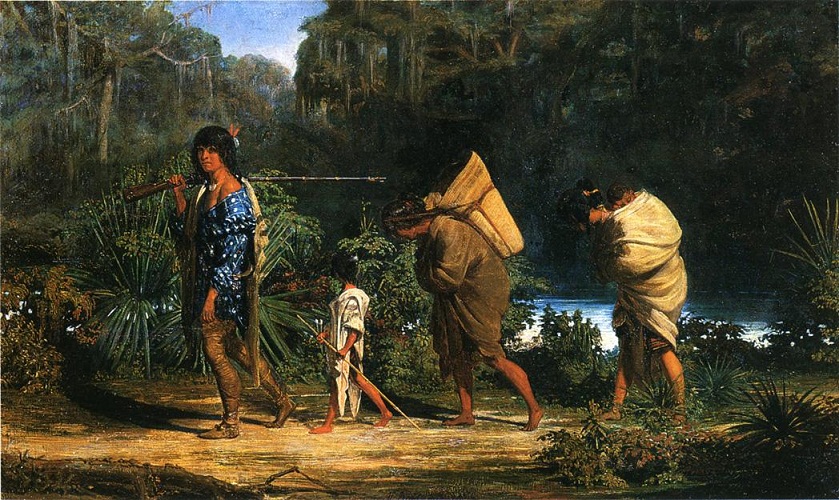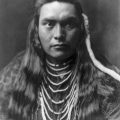
During the first part of the nineteenth century, the American government policy was to remove Indians from east of the Mississippi River and to “give” them reservations in Indian Territory. The primary argument in favor of Indian removal claimed that European Christian farmers could make more efficient use of the land than the Indian heathen hunters. This argument conveniently ignored the fact that Indians were efficient farmers and had been farming their land for many centuries.
In their book The Columbia Guide to American Indians of the Southeast, Theda Perdue and Michael Green write:
“In one sense, removal was a continuation of the policies created by Europeans when they first came to America, took a piece of land, and pushed the Indians off it so they could use it for themselves.”
The tribes which were removed from the southern states to what would later become Oklahoma had often welcomed Christian missionaries, were successful farmers and planters, and had adopted new forms of government. In an article in Chronicles of Oklahoma, Arrell Morgan Gibson writes:
“Leaders of the Southern tribes could not comprehend, in their hope to co-exist and cope with the fast changes swirling about their nations, that their success in altering tribal ways and education, business and polity only precipitate ugly envy and antagonism among their Anglo-American neighbors.”
Arrell Morgan Gibson goes on to say:
“Leaders of the Southern tribes did not understand that the nineteenth century Anglo-American society was obsessively monistic—it feared, scorned and rejected people unlike themselves in culture and physical characteristics.”
In the south, the idea of removal stemmed from greed, from the desire to acquire Indian lands. Non-Indians justified the idea of removal with religion—Europeans had been chosen by their god to occupy and develop the land—and by racism which viewed Indians as an inferior people.
Briefly described below are some of the removal-related events from 1818, two hundred years ago.
Choctaw
In Mississippi, U.S. commissioners brought presents to the Choctaw chiefs in an effort to get them to remove to a territory west of the Mississippi River. In his book The Removal of the Choctaw Indians, Arthur DeRosier reports:
“As soon as the Indians learned that the secretary of war desired their removal west, they broke off discussions and voted unanimously against a cession. The Choctaws were so positive in their stand that the commissioners decided to abandon their negotiations and leave the nation.”
The non-Indians in Mississippi were not pleased with the failure of the negotiations and brought pressure for a “get tough” policy regarding the Choctaw. Congress responded by appointing George Poindexter to head a Congressional committee regarding the removal of the Choctaw. Arthur DeRosier writes:
“As a Mississippi politician who desired Indian lands for his constituents, Poindexter proved a poor choice for the committee chairmanship.”
No formal hearings were held and Poindexter tried to convince members of Congress that the time had come for a direct approach to Choctaw removal.
Cherokee
In Georgia, the Cherokee were informed that the United States would no longer protect them from Americans who took their lands. The United States offered the Cherokee $100,000 to abandon their lands and move west of the Mississippi.
Approximately 1,000 Cherokee from the lower towns migrated to Arkansas. They settled on former Osage lands which had been purchased for them. Among those who moved was Sequoya who was trying to develop a system for Cherokee writing.
In Georgia, John Ross was elected President of the Cherokee National Council. This was a position second to the Principal Chief. Ross was not only fluent in English, but was also literate in the language as well.
Creek
William McIntosh and the Creek National Council enacted the “Laws of the Creek Nation”. McIntosh and the council saw the American plan for civilization as inevitable and felt that the laws would help them acculturate, survive, remain in the southeast, and prosper.
Stockbridge
A party of about 75 Stockbridge under the leadership of John Mtohksin attempted to move from New York to Indiana. When they arrived in Indiana to live with the Miami and the Delaware they found that these tribes had been forced to sell their land.




Leave a Reply